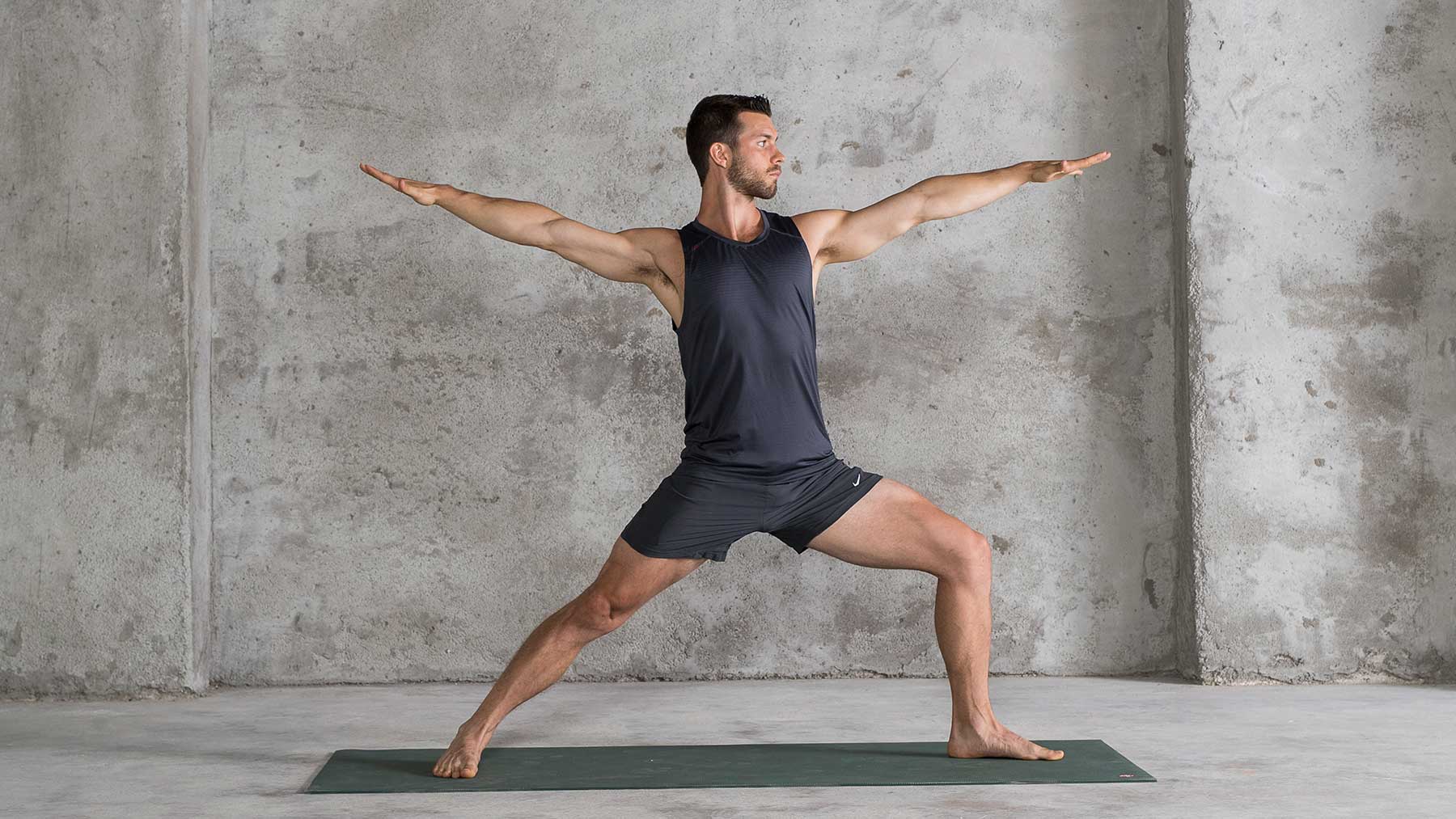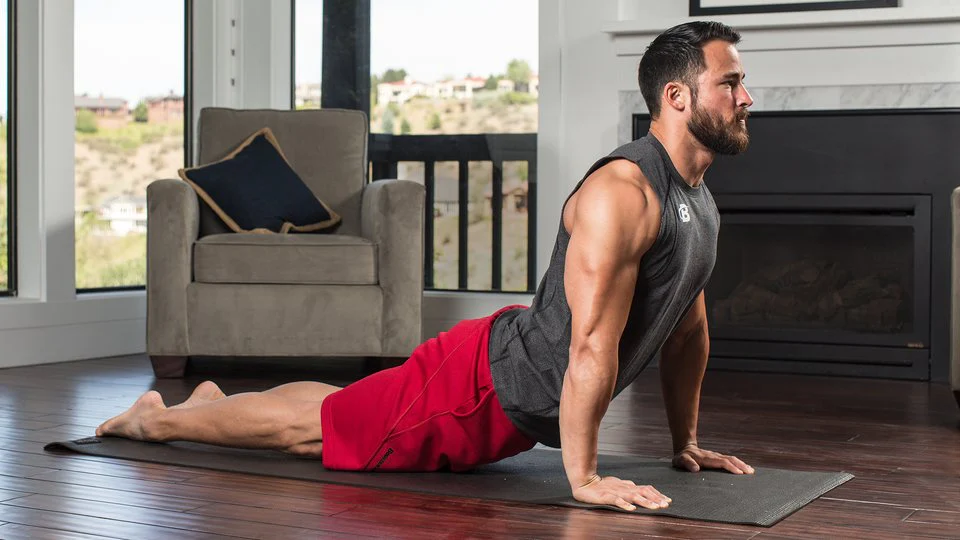Starting yoga can be a transformative journey for men, offering benefits from increased flexibility to improved mental health. This beginner’s guide is tailored for men new to yoga, breaking down misconceptions, highlighting the physical and mental advantages, and providing practical tips to start your practice. Whether you’re looking to enhance your fitness routine or find mental clarity, this guide will help you navigate the basics of yoga, ensuring a smooth and rewarding introduction.

Contents
Beginners Guide To Yoga For Men
Yoga, often misconceived as a practice tailored primarily for women, offers a multitude of benefits for men as well. From professional athletes to fitness enthusiasts and those seeking mental calm, men across the spectrum are discovering the transformative power of yoga. This beginner’s guide aims to demystify yoga for men, highlighting its benefits, addressing common concerns, and offering practical tips to get started.
Understanding the Benefits:
Yoga is not just about flexibility. It’s a comprehensive practice that combines strength training, flexibility, balance, and meditation. Here are some benefits that are particularly appealing to men:
- Enhanced Physical Fitness: Yoga improves strength, flexibility, and endurance, which can enhance performance in other sports and activities.
- Injury Prevention: By improving flexibility and balance, yoga can help prevent injuries that are common in high-impact sports and workouts.
- Stress Reduction: The meditative aspects of yoga can help reduce stress and anxiety, promoting a sense of calm and mental clarity.
- Improved Posture and Core Strength: Regular yoga practice strengthens the core and helps improve posture, which is beneficial for those with desk jobs.
Choosing the Right Style:
Several yoga styles are suitable for beginners, but some may be more appealing to men looking to get into yoga:
- Hatha Yoga: A good starting point for beginners, focusing on basic postures and slow movements.
- Vinyasa Yoga: A more dynamic style that links breath with movement, offering a cardiovascular workout.
- Ashtanga Yoga: A rigorous style that follows a specific sequence of poses, appealing to those looking for a challenge.
- Iyengar Yoga: Focuses on precision and alignment, using props like blocks and straps to aid in the correct posture.
Getting Started:
- Find the Right Class: Look for beginner classes or workshops specifically designed for men. This can provide a comfortable environment to learn the basics.
- Choose Appropriate Gear: Wear comfortable, stretchable clothing and use a good yoga mat that offers sufficient grip.
- Start Slowly: Begin with foundational poses and gradually increase the difficulty as your flexibility and strength improve.
- Incorporate into Your Routine: Aim to practice yoga regularly, but don’t be discouraged if you can’t do it every day. Even a couple of times a week can offer significant benefits.

Common Concerns:
- “I’m not flexible enough”: Yoga is about progress, not perfection. Flexibility will improve over time.
- “Is it enough for a workout?”: Yes, certain styles of yoga can be quite physically demanding and can be a full workout on their own.
- “Will I be the only guy?”: While yoga classes tend to have more women, the number of men attending yoga classes is on the rise.
The Best Beginner Yoga Poses For Men
Here are some of the best beginner yoga poses that are particularly beneficial for men, often targeting areas that may be tight or less flexible due to common lifestyle habits and physical activities.
1. Mountain Pose (Tadasana):
Why It’s Great: It teaches basic alignment, improves posture, and focuses your breathing.
- How to Do It: Stand with feet together, arms at your sides. Distribute your weight evenly across your feet, engage your core, and align your hips over your ankles. Reach your arms overhead with palms facing each other, stretching your body long.
2. Downward-Facing Dog (Adho Mukha Svanasana):
Why It’s Great: Stretches shoulders, hamstrings, calves, and hands. It also strengthens arms and legs.
- How to Do It: Start on your hands and knees. Lift your hips up and back, straightening your legs as much as possible. Press your hands into the mat, and try to bring your heels down to the ground.
3. Warrior I (Virabhadrasana I):

Why It’s Great: Builds focus, power, and stability. Stretches the chest, lungs, shoulders, hips, and thighs.
- How to Do It: From a standing position, step one foot back, turning it out slightly. Bend your front knee, keeping it over the ankle. Raise your arms overhead, and gaze forward. Engage your core and keep your hips facing forward.
4. Warrior II (Virabhadrasana II):
Why It’s Great: Enhances concentration and stamina. Opens up the hips and strengthens the legs.
- How to Do It: From Warrior I, open your hips, shoulders, and chest to the side, extending your arms parallel to the floor. Keep the front knee bent and gaze over your front hand.
5. Seated Forward Bend (Paschimottanasana):
Why It’s Great: Calms the brain and helps relieve stress. Stretches the spine, shoulders, and hamstrings.
- How to Do It: Sit with your legs extended in front of you. Inhale and raise your arms overhead. Exhale and hinge at the hips to fold forward, reaching your hands toward your feet. Keep your back as straight as possible.
6. Cat-Cow Stretch (Marjaryasana-Bitilasana):
Why It’s Great: Improves spine flexibility and relieves tension in the torso.
- How to Do It: Start on your hands and knees. Inhale, dropping your belly towards the mat and lifting your head and tailbone towards the sky (Cow Pose). Exhale, rounding your spine towards the ceiling and tucking your chin to your chest (Cat Pose).
7. Bridge Pose (Setu Bandhasana):
Why It’s Great: Strengthens the back, buttocks, and hamstrings. Stretches the chest, neck, and spine.
- How to Do It: Lie on your back with knees bent and feet flat on the floor, hip-width apart. Press your feet and arms into the floor as you lift your hips toward the ceiling. Clasp your hands under your back to open your chest more.
Common Challenges for Men in Yoga
While yoga offers numerous benefits for everyone, men might face some specific challenges when starting or continuing their practice. Here are some common ones:

1. Tightness and inflexibility: Men, on average, have tighter muscles and less flexibility compared to women due to:
- Physiology: Men tend to have more muscle mass and thicker connective tissues, leading to reduced flexibility.
- Activity history: Men often engage in activities like weightlifting that focus on strength and power, potentially neglecting stretching and flexibility exercises.
2. Addressing specific poses: Certain yoga poses can be particularly challenging for men due to their anatomical differences:
- Forward folds: Tight hamstrings can make it difficult to reach the floor comfortably in forward folds.
- Hip openers: Men naturally have narrower hips, limiting their range of motion in poses that require external hip rotation.
- Backbends: Tightness in the chest and shoulders can make backbends uncomfortable or inaccessible.
3. Overcoming societal perceptions: Some men might feel self-conscious or hesitant to try yoga due to societal stereotypes associating the practice primarily with women.
4. Finding the right class: Finding a yoga class that caters to men’s specific needs and preferences can be challenging, especially for beginners.
5. Ego and competitiveness: Men might struggle to let go of the competitive mindset and focus on self-improvement at their own pace, a core aspect of yoga practice.
Frequently Asked Questions
Can yoga help men build physical strength?
Yes, yoga is not just about flexibility but also helps in building physical strength for men. By practicing yoga regularly, men can enhance muscle strength, core strength, and balance, which are essential for overall physical fitness.
Is yoga suitable for men who want to prevent injuries?
Absolutely, yoga can play a significant role in preventing injuries for men. By improving flexibility, mobility, and balance, yoga helps in reducing the risk of injuries, especially during physical activities or workouts.
How does yoga benefit men’s mental health?
Yoga is a holistic body and mind workout that promotes mental clarity, reduces stress, and boosts overall well-being for men. Through breathing techniques, mindfulness, and meditation, yoga can help men manage stress, improve focus, and achieve mental peace.

Hello, I’m Ravindra. Over the years, I’ve immersed myself deeply into the world of fitness and health, transforming both my body and mind. Writing has allowed me to share my journey, insights, and expertise with those just starting out and seasoned fitness enthusiasts alike. Beyond just routines and diets, I believe in inspiring others to adopt a holistic approach to well-being.
